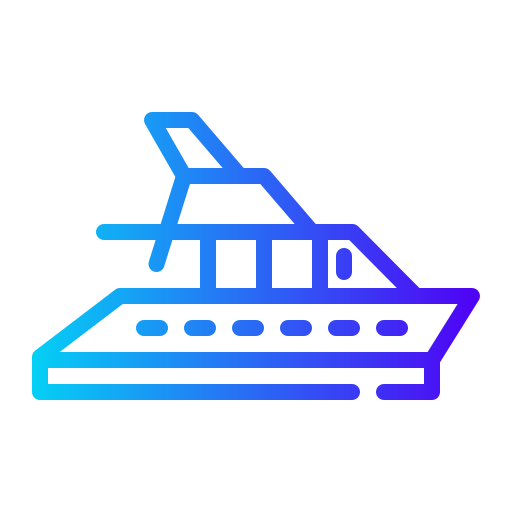Yachting, an exhilarating experience on the open sea, demands a comprehensive understanding of safety protocols and equipment. The unpredictable nature of maritime environments necessitates specific safety gear to ensure a secure experience for all onboard. Below, we delve into the essentials of yacht safety equipment, discussing their purposes, features, and importance in maritime safety.
Life Jackets and Personal Floatation Devices (PFDs)
Life jackets or Personal Floatation Devices (PFDs) are non-negotiable items for any yacht. These devices are designed to keep a person afloat in water, significantly increasing chances of survival in case of an overboard incident. When selecting PFDs, ensure they meet the necessary safety standards and are appropriate for each passenger’s weight and size. Considerations include:
- Type: There are various types of life jackets, including inherently buoyant, inflatable, and hybrid options.
- Fit: Life jackets must be worn correctly. They should fit snugly without being restrictive and allow for easy movement.
- Visibility: Choose jackets in bright colors with reflective strips to ensure visibility during emergencies.
Emergency Position-Indicating Radio Beacon (EPIRB)
An EPIRB is a crucial component of yacht safety equipment. This device sends a distress signal to search and rescue services when activated. It transmits the vessel’s position and identifies that an emergency situation is occurring. Key features include:
- 406 MHz Frequency: This frequency is utilized for global satellite coverage, ensuring that authorities can locate the vessel quickly.
- Automatic Activation: Many modern EPIRBs activate automatically upon contact with water, providing a fail-safe mechanism during an emergency.
- Battery Life: Ensure that the EPIRB has a long battery life, typically 48 hours, after being activated.
Fire Extinguishers
Fire safety aboard a yacht is imperative given the common causes of onboard fires, such as cooking and electrical malfunctions. Adequate fire extinguishers should be readily available and easily accessible. Important points to consider are:
- Type: Class B extinguishers are most effective against flammable liquids, while Class A extinguishers tackle solid combustibles.
- Regular Maintenance: Conduct inspections to ensure that extinguishers are in good working condition and replace or recharge them as necessary.
- Location: Mount extinguishers in clearly marked locations and ensure that all passengers are familiar with their whereabouts.
First Aid Kit
A comprehensive first aid kit is essential for handling medical emergencies on board. The kit should contain items that address common injuries and medical situations you may encounter while at sea. Key components of a first aid kit include:
- Bandaids and Gauze: For minor cuts and abrasions.
- Antiseptics: Such as alcohol swabs and antiseptic wipes to prevent infections.
- Pain Relievers: Including over-the-counter medications like ibuprofen and aspirin.
- Emergency Blanket: To prevent hypothermia in case of extreme weather conditions.
Signal Flare Kits
Signal flares are essential for alerting nearby vessels of your distress. When visibility is low or if you require immediate assistance, flares can be a lifesaving tool. Accuracy and effectiveness of flares depend on:
- Type of Flares: Consider both handheld flares and aerial flares for diversified signaling.
- Expiry Dates: Regularly check and replace expired flares to ensure they are effective when required.
- Proper Storage: Keep flares in a dry, accessible location to ensure rapid deployment in emergencies.
Navigation and Communication Devices
Staying connected and aware of your surroundings is vital for safe yachting. Recommended devices include:
- GPS Units: Accurate navigation devices help outline safe routes and avoid hazards.
- Marine VHF Radio: Essential for communication with other vessels and shore services, particularly for emergency situations.
- Charts and Maps: Always have physical copies available, as they provide critical information regarding the waters you are navigating.
Additional Considerations
Beyond the fundamental safety equipment, other gear may enhance safety aboard a yacht:
- Anchor and Chain: A reliable anchoring system ensures vessel stability when stationary.
- Life Raft: In extreme emergencies, life rafts can accommodate passengers until rescue.
- Wind Indicator and Weather Monitoring Tools: Monitoring wind and weather conditions can prevent hazardous situations.
Conclusion
Ensuring safety on a yacht involves proactive measures and preparedness. By equipping yourself with the essential safety gear outlined above, you significantly enhance the protection and security of all passengers onboard. It’s not just about being equipped but being knowledgeable in utilizing this equipment effectively and ensuring everyone on board knows safety protocols.
In conclusion, a safe yachting experience hinges upon proper preparedness and adherence to safety measures, ensuring every adventure on the water is both enjoyable and secure.
